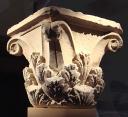 There’s a common misperception that Greek settlement in Afghanistan was simply the remnants of Alexander’s garrisons in the east. For example, writing in a recent New York Review of Books, the estimable William Dalrymple says, “After [Alexander] died, the Greek garrisons he had established in what is present-day Pakistan and Afghanistan found themselves cut off from their Mediterranean homeland and had no choice but to stay on, intermingling with the local peoples, and leavening Sanskrit learning with classical Greek philosophy.”
There’s a common misperception that Greek settlement in Afghanistan was simply the remnants of Alexander’s garrisons in the east. For example, writing in a recent New York Review of Books, the estimable William Dalrymple says, “After [Alexander] died, the Greek garrisons he had established in what is present-day Pakistan and Afghanistan found themselves cut off from their Mediterranean homeland and had no choice but to stay on, intermingling with the local peoples, and leavening Sanskrit learning with classical Greek philosophy.”
If this were true, it would have to be a pretty impressive garrison of troops to have such an impact. But the reality is that there was an active program of settlement even in the easternmost satrapies, with Greek colonists moving to Bactria, and other regions, over the course of many — hundreds? — years. At least at first these were not isolated communities, and they were designed to anchor the successor kingdoms. John Grainger writes in his Alexander the Great Failure:
[Alexander’s successor] Seleukos found groups of Greeks and Macedonians scattered throughout his lands, usually former soldiers settled in old Persian centers or new Macedonian garrisons. He organized several of these places as new cities, each with a defined territory, a set of public buildings, including city walls. Each city also had a garrison established in an adjoining citadel; he established cities, but also ensured that he retained control. Some of these places were organized while he was in the east campaigning in Baktria and India, and he inherited Alexander’s foundations as well: at Alexandria at Kandahar, Alexandria-Eschate and Merv, in Margiane.
And their impact was huge; in art (veristic portraiture, for one arrived in South Asia with the Greeks), medicine, language and scripts, warfare, governance, and philosophy. But despite this acknowledged influence, until fairly recently, there was a paradox about the Greeks in Afghanistan: there was the textual record and the evidence of their impact — Buddha statues in togas, lots of numismatic evidence, the edicts of Asoka in Bactrian written in Greek letters, and so on — but we didn’t know where their fabled cities were. Balkh today, outside of Mazar-e-Sharif, Ali’s tomb, in northern Afghanistan, is a dusty little village: Colin Thubrow reports in Shadow of the Silk Road that “almost nothing in Balkh remained.” This paradox — lots of evidence, no cities — was often referred to as ‘the Bactrian mirage,’ and it was resolved only with the modern discovery, by French archeologists before the Soviet invasion, of the classical Greek city of Ai Khanoum in northern Afghanistan.
